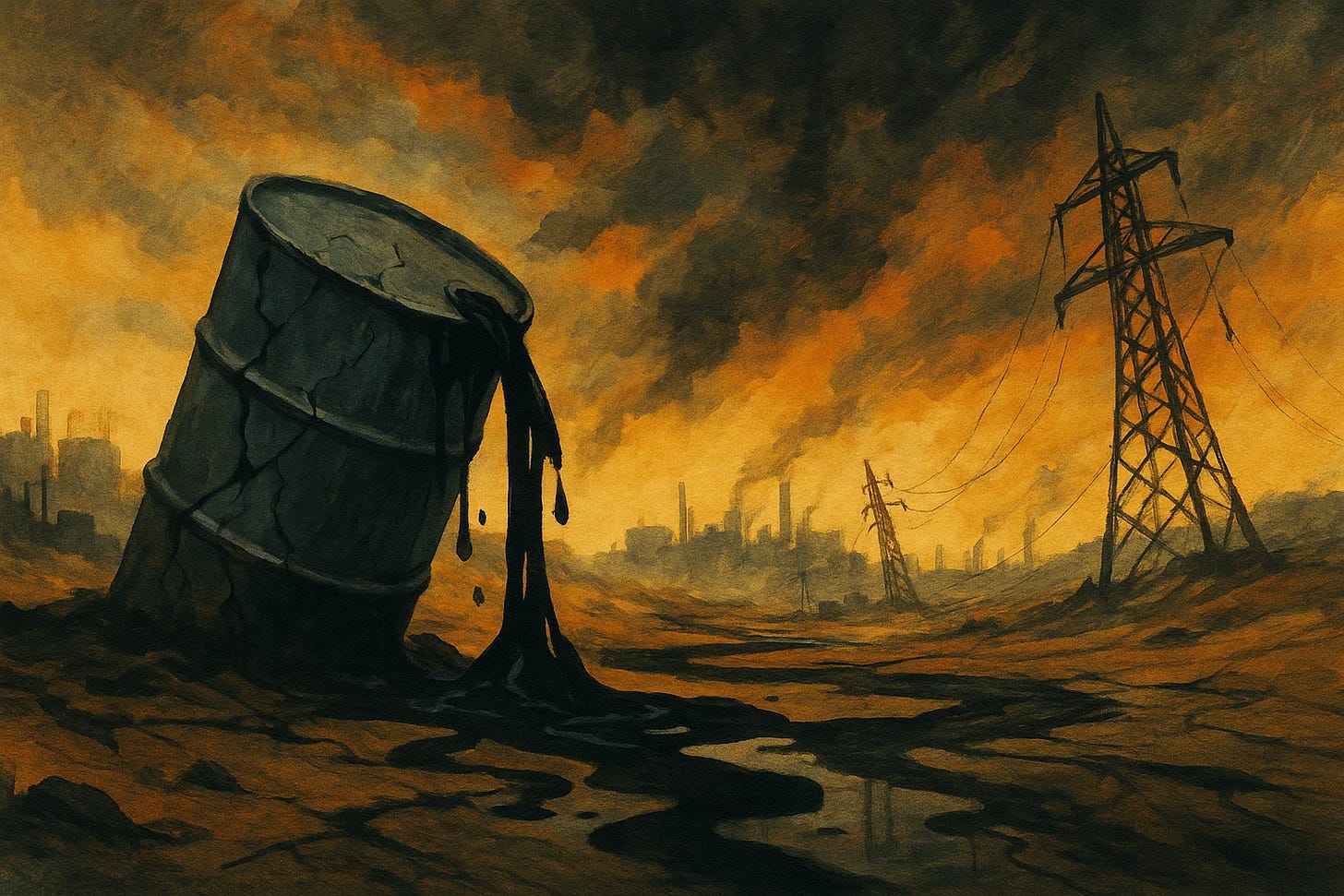Russia’s Economic Shutdown
The oil is underground, but the revenue is history.
When oil becomes a liability rather than leverage, Russia isn’t at the mercy of war. It’s at the mercy of math.
The Kremlin’s lifeblood is hemorrhaging. No strategic pivots or Eurasian bromances can stop the bleed. The Q1 2025 numbers aren’t just bad. They’re historic. And worse: revealing.
For the first time in years, the Russian oil sector flipped from a $4 billion profit to a $4 billion loss. Surgutneftegas, once a fortress of hard currency built to survive economic Armageddon, posted a 439.7 billion ruble loss. Gazprom Neft also collapsed, turning a 36.9 billion ruble profit into a 21.3 billion ruble deficit. Production costs climbed. Revenues tanked.
Crude exports, now reliant on Asian buyers after Europe walked away, hit a two-year low. The four-week average fell by 170,000 barrels per day. Export values dropped 4% week over week.
Russia’s so-called shadow fleet—a rusting armada of nearly 350 tankers cobbled together to dodge sanctions—is keeping oil flowing outside the Western system. But the farther Russia drifts from that system, the more punishment it absorbs. These uninsured, untraceable vessels are aging out. When they go down—and many will—Russia won’t just lose ships. It will lose access to buyers no longer willing to touch sanctioned crude.
So how did a petro-superpower spiral into fiscal triage in a year?
It was never about how much oil Russia had. It was about what it cost to extract, how steep the discounts needed to be, and how little the Kremlin could afford to admit. Selling oil 30% below benchmark just to keep the lights on isn’t strategy. It’s surrender.
The Kremlin is bleeding cash. Fast.
Sovereign reserves are being tapped. Billionaire vaults raided. Liquidity cannibalized to mask insolvency. It might buy a few more quarters, but it doesn’t change the endgame. At the current burn rate, usable foreign currency reserves could vanish before 2026 ends. At that point, the war economy doesn’t just collapse. It implodes.
Russia’s economy is binary: oil and weapons. Arms exports are down over 60% in five years. Oil is turning into a loss leader. Military spending now consumes 40% of the federal budget. Ukraine isn’t just draining military resources. It’s bankrupting the state at a structural level.
Inflation hovers near 10%. Interest rates are 20%. The ruble, though briefly stronger, undercuts ruble-denominated revenues from dollar-priced oil. Every policy fix creates two new problems. The system is devouring itself.
Western analysts still recite the same tired line: Russia is resilient. So was Enron, right until the lights went out.
Russia stays afloat not through dominance but through inertia and fear. China and India are still buying—but only at a steep discount. Brent trades in the 60s. Russian crude is lower still. High volume, low margin, no leverage.
Sanctions aren’t perfect. They don’t need to be. The point isn’t instant collapse. It’s attrition. And it’s working. Russia has spent over $10 billion just to buy decrepit ships for oil transport. That’s money not spent on munitions, not reinvested in energy, not stabilizing the economy.
Some still cling to the myth of a fortress economy. That fiction is cracking. The current war machine runs on coercion and desperation. It’s burning the future to preserve a dying present.
The regime might scrape together another year or two. But by then, capital will have fled, the middle class hollowed out, and the elite will be watching their fortunes—or their friends—vanish into exile, prison or the sidewalk below.
The West, for its part, remains reactive. Price caps are set too high. Sanctions come too late. Enforcement is scattershot.Diplomacy has outsourced the task to market gravity, hoping natural forces will do what coordinated policy has not. Russia is betting on that drift. Its greatest asset now isn’t oil. It’s time. Because memories fade. Crude rebounds. Allies shift.
That’s the gamble: to outlast the world’s attention span.
But oil doesn’t care about geopolitics. It follows cost, logistics, infrastructure, and confidence. All four are turning against Moscow.
The war is bankrupting Russia not because of ideology—but because it’s simply bad business. The rubles are vanishing.Buyers are hesitating. The wells are still full—but nobody’s paying full price. And political poison doesn’t sell at market value.


